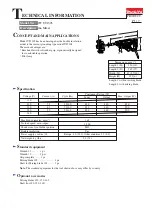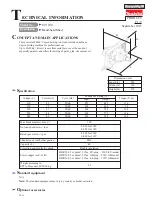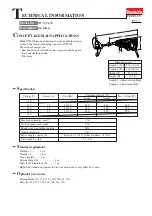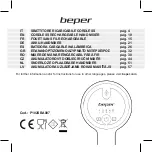
Master Section Controls and Indicators
On the bottom right of the SSL Channel Strip are the master gain controls and level indicator.
1.
Level Indicator
Levels are expressed in dBFS, although all parameters are expressed
as dBu.
2.
INPUT
and
OUTPUT
switches above the meter allow you to toggle the level indicator
between input and output.
3.
An
Input Trim Button
enables you to trim the input to the channel by ± 18db. The
plug-in is aligned so that -18 dBFS = 0.
4.
The
Output Fader
controls the output level of the processor.
5.
Analogue on/off.
Classic analogue processors necessarily create more noise and
harmonic distortions than modern digital devices. This is, in part, what gives analogue
processors their desired sound. By default, all components of the SSL 4000 Collection
operate in a mode which enables emulation of the SSL analogue console. However, there
may be times when you prefer to use this plug-in without these special attributes.
Switching off
Analogue
disables analogue emulation.
6.
Phase Reverse (Ø)
This button reverses the phase of the input signal.
4. The Waves System Bar
All Waves plug-ins share a common feature, the Waves System Bar, which takes care of most
administrative functions you will encounter while working with Waves plug-ins. Since the Waves
System Bar is the same on practically all Waves plug-ins, you will always know how to file,
compare, load and copy the parameters of a Waves plug-in, even if you have never before
worked with that particular processor.
Commands common to all Waves plug-ins:
Undo
undoes the last performed action.
Redo
redoes the last undone action. There are 6 levels of undo and redo.
Setup A/B
toggles between two sets of parameters within the same processor – useful when
comparing different parameter settings in order to achieve optimal results.
Copy A->B
copies the current settings to the second setup register.
Save
used for saving presets in the Waves file format (.xps)
There are two options for saving:
Save to new file
: creates a new .xps file wherein multiple presets can be
saved.
Save into preset menu
: saves the preset into the default list of the plug-in.
Load
allows recalling presets from files.
Once a file is selected, its first preset will load and become active. Other presets in
the file will be listed under the preset’s name in the
Load
menu.
You can also load factory presets and user presets (saved using “
Save into preset
menu
.)
Pressing the
?
button will open the manual for the plug-in you are using.
Содержание SSL 4000 E
Страница 4: ...3 SSL 4000 Channel Controls and Indicators...

























